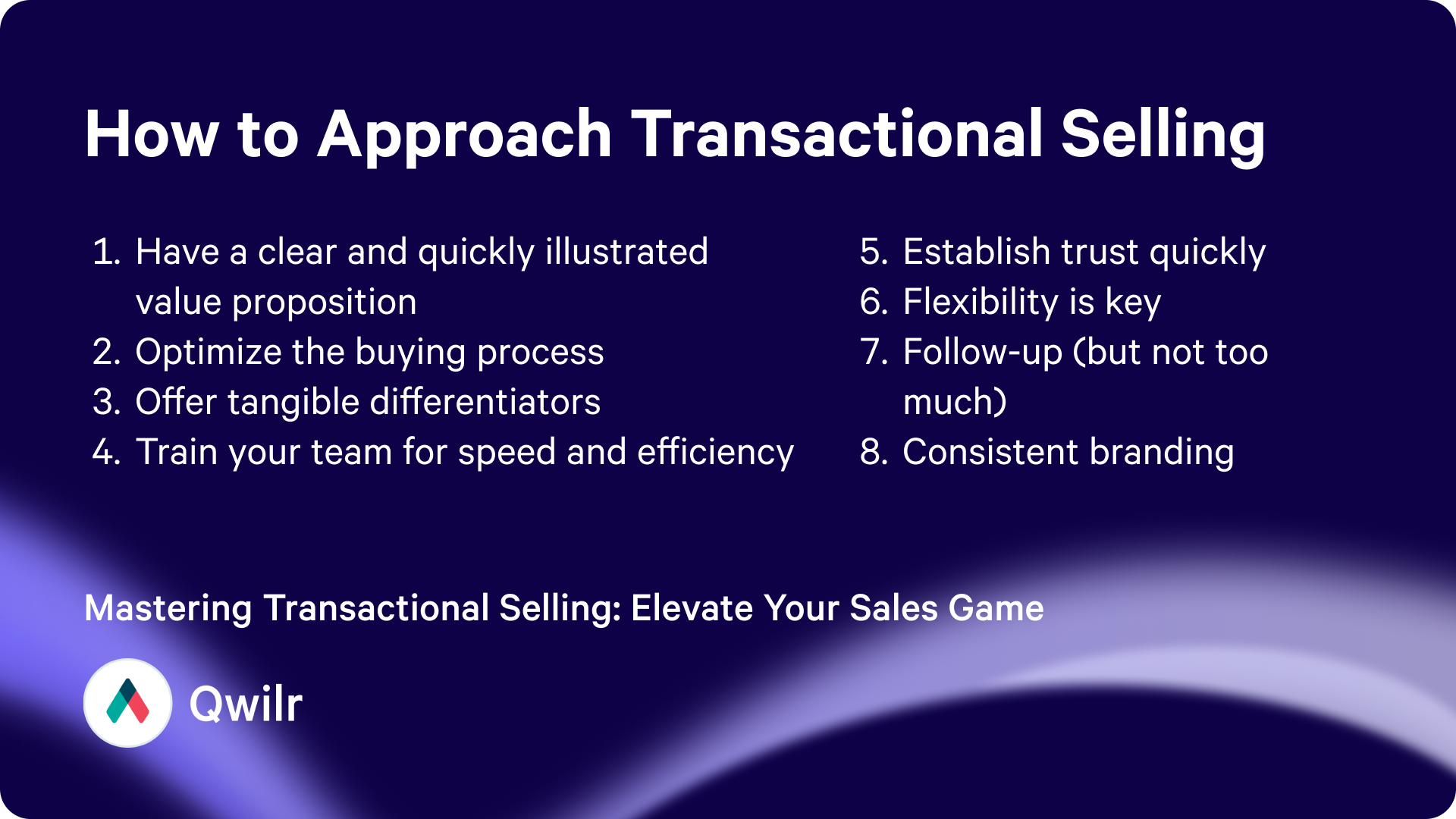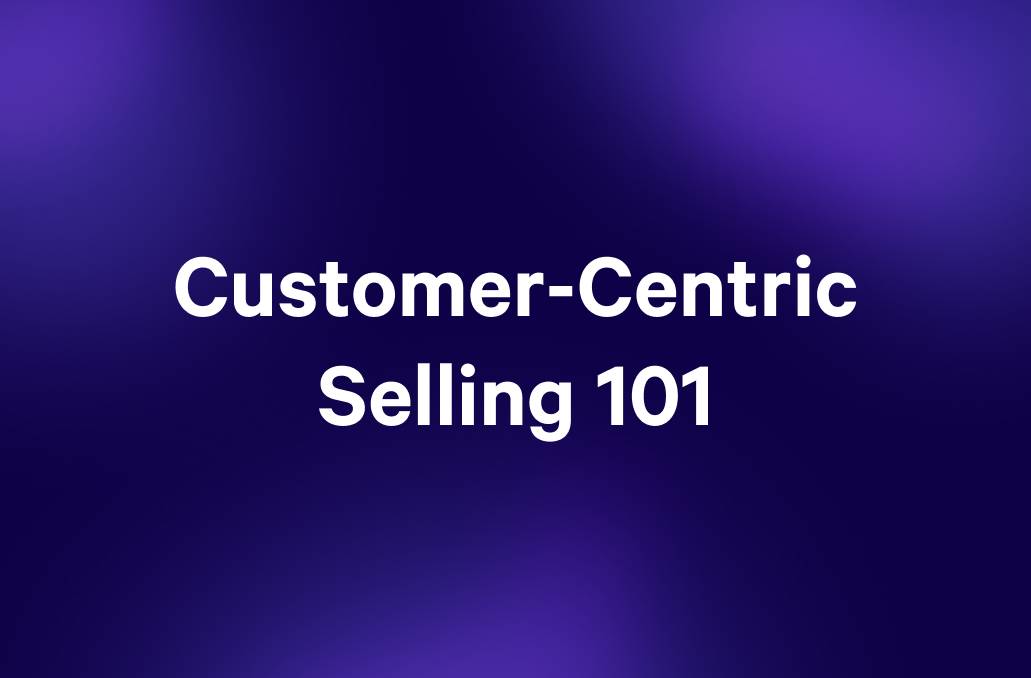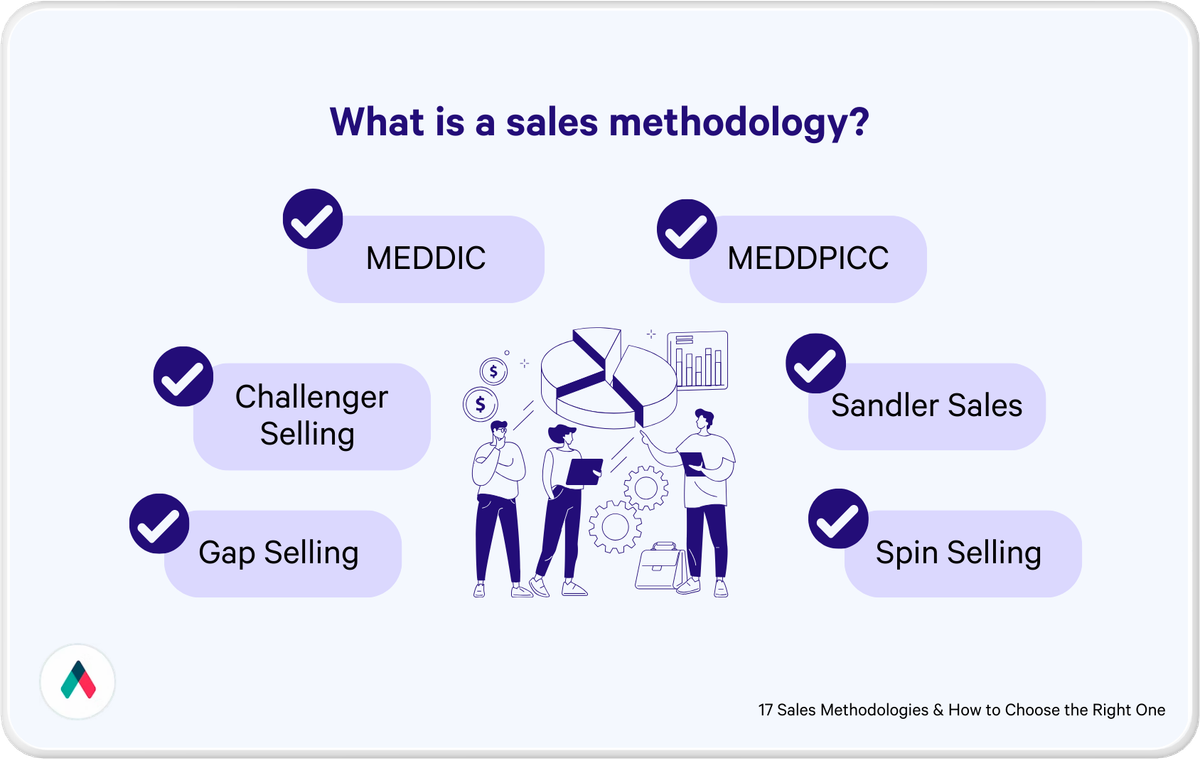Close your eyes and imagine you’re at Starbucks. You know what you want—a simple cup of black coffee. No frills, no flavored syrups or whipped cream, no long conversations. You walk up, order, pay, and walk out with your drink in hand. Quick and straightforward, right? That's transactional sales in a nutshell.
In business, transactional sales is the method where a product or service is sold, and the deal is closed almost immediately. No need for rapport or relationship-building; a nice short, sharp sales process.
The focus is primarily on the product and its price and getting it into the customer’s hands. It's all about that quick exchange, similar to how you bought that cup of coffee. The salesperson offers the product or service, the customer sees the value, makes a decision, and the deal is closed. It’s the "here and now" of sales, where decisions are made in the blink of an eye.
Sounds simple, right? But how does this differ from other sales methodologies?
What is the difference between transactional selling and consultative selling?
Have you ever walked into a store knowing you needed a suit but unsure of the style, fit, or color? Instead of just picking one off the rack, you've had a salesperson guide you, ask about the occasion, suggest styles, and maybe even talk about the latest fashion trends. By the end, you've not only bought a suit but one tailored to your needs. That’s consultative selling.
Now, let's contrast this with our coffee shop scenario from earlier.
Transactional selling:
- Immediate gratification: Like grabbing that cup of coffee, it's about quick decisions and swift transactions. You know what you want, you get it, and you're on your way.
- Product-centric: The focus is on the product or service itself—its features, benefits, and price.
- Short sales cycle: The interaction between the salesperson and the customer is brief. The goal is to close the deal quickly.
- Limited engagement: There's minimal relationship-building. It’s more about the transaction than building a lasting connection with new customers.
Consultative selling:
- Needs assessment: Here, the salesperson is more of a consultant, asking questions to identify and understand the customer's unique needs.
- Solution-oriented: It's not just about selling a product; it's about solving a problem or fulfilling a specific need.
- Longer sales cycle: Due to the nature of understanding and catering to individual needs, the sales cycle can be lengthier.
- Deep engagement: This method focuses on the sales representative building a relationship, understanding the client’s needs, and aiming for repeat business.
So, while transactional selling is like a sprint, consultative selling is more of a marathon. Both have their places, but understanding when and where to apply each is the key to sales success.
How is transactional selling different from relationship selling?
Okay, so this one will need a different analogy: Imagine you’re attending a family friend's wedding. The event planner, someone you've known for years, recommends a photographer who did wonders at another wedding you attended.
You trust their judgment implicitly and book the photographer without haggling or checking others. Why? Because of the established relationship. That trust and rapport exemplify relationship selling.
Let’s break it down by contrasting it with our familiar coffee shop scenario.
Transactional selling:
- On-the-spot interaction: Think of it as a one-time meeting. You walk in, make your purchase, and that’s it. There's no expectation of seeing that salesperson again or them remembering your purchase preferences (though that would be nice!).
- Focused on the now: The emphasis is on the current transaction. Immediate needs are met, money is exchanged, and both parties move on.
- Limited loyalty: Since there’s minimal relationship-building, the customer might just as easily buy from a competitor next time.
Relationship selling:
- Ongoing interaction: Like frequently meeting that event planner at various gatherings, it's about continuous engagements over time.
- Focused on the future: The aim isn’t just the immediate sale but future sales and referrals. It’s a long-term game.
- Building trust: Over time, a bond of trust and loyalty is cultivated. Customers become advocates, often leading to word-of-mouth referrals.
- Emotional connection: Beyond just the product, there's an emotional tie. Customers feel understood and valued by the sales professionals, creating a deeper bond.
In a way, while transactional selling can feel like speed dating, relationship selling is more like nurturing a long-term romantic relationship. It requires patience, understanding, and commitment. But when done right, it can lead to loyal customers who not only repeatedly buy but also become ambassadors for your brand.
Now, the million-dollar question: When is the fast-paced world of transactional sales the right approach?
When is a transactional sales approach actually applicable?
Transactional selling works, but the key lies in when and where it is applied.
First, consider the market you're in. Some markets are better suited for transactional selling than others. For example, e-commerce and retail industries typically favor transactional sales because they often have:
- High deal volume
- Low Average Contract Value (ACV)
- Shorter sales cycles
This means that the focus is on getting quick sales and driving revenue in a relatively short time.
Goods best suited to this approach are typically:
- Commoditized products: If you're dealing with products that are widely available and have little differentiation from one vendor to another, transactional selling is often your best bet. Think of products like your office supplies - printer paper, pens, or USB drives.
- Demonstrating a clear and defined value proposition: If the benefits and features of your product are easy to understand and don’t require much education or customization, the quicker transactional approach is suitable.
- Impulse buys: Have you ever been at the checkout counter and grabbed a candy bar? That's the magic of impulse buying. If your product fits this category, a prolonged sales pitch might be overkill.
- Low risk and commitment: If buying your product or service doesn't require a hefty financial investment or long-term commitment from the buyer, the transactional method works wonders.
- Short sales window: In situations with a limited-time offer or a fast-approaching deadline, the swift nature of transactional sales can be a game-changer.
- Familiar to the buyer: When customers already know what they want because they've done it before or have seen it elsewhere, a quick transaction is often all they’re looking for.
While it's tempting to think of transactional sales as a universal approach (who doesn't love a quick win?), it's crucial to evaluate if it fits the product, the audience, and the sales environment. But if it does fit, how do you make the most of it?
How to approach transactional selling
So, you're at a bustling street food market. The aroma of fresh tacos fills the air. But amidst the dozens of high-volume vendors, one stall catches your attention. Why? Maybe it's the vibrant sign, the unique toppings they offer, the lowest price, or just the sheer enthusiasm of the vendor. That's the essence of standing out in a transactional environment. But how do you replicate this in your own business if you don’t sell tacos?
1. Have a clear and quickly illustrated value proposition
Much like that taco stall, you have seconds to capture buyers’ attention. Transactional selling is a short-term objective. Your product's value should be communicated swiftly and clearly. Why should they choose you over others?
2. Optimize the buying process
Think about a seamless online checkout experience. Fewer clicks, clear CTAs, and an intuitive design can make all the difference. In physical sales, it’s about reducing wait times and making the purchase process as straightforward as possible. If you sell over the phone, consider a sales call script that gets right to the point and has your prospect on their way to a purchase in minutes.
3. Offer tangible differentiators
Maybe it's a unique feature, a special discount, or a bundled product. Just like the unique taco topping, what sets you apart from the competition? If you want to increase your successful sales rate and have more transactions taking place, think about what you can bring up in an initial sales conversation to close the deal right then and there.
4. Train your team for speed and efficiency
Equip your sales reps with the sales tools and training to answer queries that come up in any sales opportunity promptly and handle transactions efficiently.
5. Establish trust quickly
While transactional sales is one of the sales models that doesn’t focus on long-term relationships, trust is still vital. This could be through visible customer reviews, testimonials, or industry certifications.
6. Flexibility is key
Be ready to adapt. Can you offer multiple payment methods? Or accommodate last-minute changes to an order? Flexibility can often tip the scales in your favor and help your sales reps close the deal.
7. Follow-up (but not too much)
A quick thank-you note or a feedback survey can go a long way. It adds a touch of personalization to an otherwise brisk transaction.
8. Consistent branding
Whether it's the color scheme, logo, or tone of communication, ensure consistency across touchpoints. It keeps your brand top of mind with prospective customers.
Remember, in a transactional selling environment, every second counts. It's all about balancing speed with value. Offer your customers not just a product but a memorable buying experience. Because sometimes, it’s not just about the taco but how it’s served.

Common pitfalls with the transactional sales approach
While transactional sales can seem straightforward, there are still a few common sales missteps that can hinder success.
1. Overlooking customer needs
Just because it's a quick sale doesn't mean the customer's needs should be ignored. Ensuring the product aligns with what the customer is looking for is essential.
2. Sacrificing quality for speed
In the rush to close a sale, there's a temptation to cut corners. However, compromising on quality or service can damage your brand in the long run.
3. Neglecting after-sale service
Do you think the deal is done once the transaction is over? Think again. Lack of post-purchase support or addressing concerns can lead to unhappy customers.
4. Being too aggressive
Pushing too hard for the sale can deter potential customers (in fact, this one has turned me off at many of those bustling markets…). It's about striking the right balance between assertiveness and understanding.
5. Not adapting to market changes
The marketplace is dynamic. Sticking to a rigid strategy, even when signs suggest a change is needed, can be detrimental.
6. Ignoring feedback
Even in a rapid sales environment, feedback is golden. Whether it's constructive criticism or praise, it offers insights to refine your approach.
7. Lack of relationship-building
While transactional sales don't focus on long-term relationships, completely ignoring relationship-building can be a mistake. A little rapport can often turn one-time buyers into repeat customers.
8. Not training the sales team adequately
A team that's not well-versed with the product or doesn't have the skills to handle swift transactions can be a significant setback.
9. Overdependence on discounts
While promotions and discounts can boost sales, over-relying on them can erode your profit margins and brand value.
10. Not analyzing sales data
Every sale, no matter how small, generates data. By not leveraging this data to gain insights and refine strategies, you’re leaving money on the table.
Being aware of these pitfalls and actively working to avoid them can set you on a path to consistent success. After all, even in a ring toss game, strategy and mindfulness can make all the difference.
FAQs
What is transactional vs complex sales?
Transactional sales focus on closing individual sales as quickly as possible with minimal emphasis on building long-term customer relationships. On the other hand, complex sales involve longer sales cycles, negotiation, and a focus on solving the customer's problems.
What is the difference between enterprise sales and transactional sales?
Enterprise sales target larger companies or organizations, often involving multi-layered decision-making processes and longer sales cycles. They typically include higher-priced products or services, and salespeople need to demonstrate the value these products can bring. Transactional sales focus more on quick sales with competitive pricing, social proof, and purchase urgency.
What is transactional selling vs strategic selling?
While transactional selling emphasizes quick sales and a short sales cycle, strategic selling focuses on understanding customers' needs and pain points and then providing solutions that address them. Strategic selling involves conducting thorough market research, developing sales strategies, building trust, and maintaining long-term customer relationships. By creating value for your customers, strategic selling aims to build lasting connections and increase customer lifetime value.
Setting transactional sales in motion
Think of transactional sales like your quick coffee fix - it’s fast, efficient, and, when done right, immensely satisfying. When done right are the operative words here. It certainly has its place, but this choice still needs careful consideration- as does its application.
Hopefully, this guide has helped you on both scores there!
For the more personalized, consultative sales, check out our free library of proposal templates. We have everything from proposals and case studies to presentations and invoices. Impressive sales collateral that can be customized to your branding with a drag and a drop.
Try Qwilr free today and see it for yourself.
About the author

Brendan Connaughton|Head of Growth Marketing
Brendan heads up growth marketing and demand generation at Qwilr, overseeing performance marketing, SEO, and lifecycle initiatives. Brendan has been instrumental in developing go-to-market functions for a number of high-growth startups and challenger brands.


